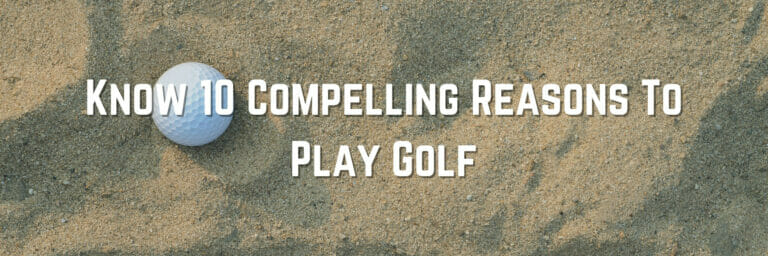Maximizing Your Year: Golf Season and the Off-Season

!!!!DISCLAIMER!!!! This site may contain Amazon & other affiliate links.
This means if you click on one of the product recommendation links, this site may receive a small commission. This is at no extra cost to you and may include exclusive discounts when possible. This helps support this site and allows us to keep making content like this. Thank you for your support!
Welcome to our guide on making the most of your year in golf. This guide will help you through both the active and quiet times. If you’re new or a pro, learning about the golf season and off-season can boost your golfing fun.
We’ll look at the differences of each time, tips for off-season practice, and how weather affects your game. Let’s get started to enhance your year-round golf adventure.
Understanding the golf season versus the off-season is key. It helps with planning and enjoying your game more. Discovering ways to practice during the off-season keeps you sharp.
Plus, knowing how weather affects your game helps in picking the best times and places to play.
What to Look Out for
- Understanding the differences between the golf season and the off-season is crucial for planning and maximizing your year as a golfer.
- Exploring off-season training strategies can help you maintain your skills and be in top form when the golf season starts again.
- Considering the impact of climate on golf can inform your decisions about where to play and when to plan your golfing trips.
- Exploring year-round golfing opportunities can open up a whole new world of destinations and courses for you to experience.
- Investing in the right gear and training methods can significantly improve your performance and enjoyment of the game throughout the year.
Understanding the Golf Season and Off-Season
Navigating the golf season and off-season is crucial for both amateur and professional golfers.
Here’s a comprehensive look at the dynamics of these periods and how they impact the game:
Golf Season Timing
- Starts: The golf season typically begins in early spring, coinciding with warmer weather that makes golf courses playable.
- Peaks: During the summer months, golfers enjoy optimal playing conditions, extended daylight hours, and the best overall golfing experience.
- Ends: As autumn approaches and temperatures start to drop, the season winds down, leading to a quieter period in the golf calendar.
Peak Season Versus Off-Season
- Peak Season:
- Characterized by ideal course conditions and longer days, allowing for more playtime.
- High demand for tee times often results in elevated course fees and increased competition among players.
- Off-Season:
- Marked by a cooler climate and shorter days, which reduce the number of players on the course.
- This period may offer more accessible tee times and potentially lower costs, making it a great time for focused training and improvement.
Role of PGA Tour Tournaments
- Impact on the Calendar: PGA Tour tournaments play a significant role in shaping the golf calendar. These events not only bring together the world’s elite golfers but also mark the rhythm of the golf season.
- Influence on Players: The scheduling of PGA Tour events often indicates the start and end of the season, influencing player anticipation and strategic planning.
- Course Selection: Knowing the PGA Tour schedule can help golfers choose the best times and places to play, aligning their personal schedules with major golfing events.
Strategic Planning
- Familiarity with the PGA Tour schedule and understanding the nuances of peak and off-seasons allow golfers to strategically plan their activities. Whether it’s choosing the right time for competitive play or focusing on skill development during quieter months, informed planning can significantly enhance a golfer’s performance and enjoyment of the game.
By understanding these aspects, golfers can maximize their year-round potential, making the most of both the vibrant peak season and the opportunistic off-season.
Off-Season Tips for Golfers
Golfers have a chance to improve during the off-season. They can focus on areas needing work with fewer tournaments. It’s a great time for strength training and keeping skills sharp. We’ll share the best ways to do this and find good deals on equipment.
Let’s get started!
Off-Season and Strength Training
Strength training is key for golf. In the off-season, players can get stronger. This makes for a better swing and faster club speeds.
Work on your core, legs, and upper body to boost fitness and stamina on the course.
Off-Season Skill Improvement
Off-season is not for slacking off. Golfers must keep practicing to stay sharp.
Here are some tips:
- Practice indoors: Use facilities or nets to improve your swing and short game.
- Try virtual golf: Simulators offer golf at home on virtual courses.
- Putt at home: Use a mat or set up a green to work on your putting game.
- Get lessons: Use the off-season for pro tips on your game.
Golf Fitness and Equipment Deals
Building a fitness plan can really help your game. A pro can design a plan just for you. Also, it’s a great time for equipment deals. You can find discounts on clubs, balls, and more. Upgrading your gear can improve your game.
With these tips, you can use the off-season wisely. Focus on training, maintain skills, and grab good deals. This will help you do well in the upcoming season.
| Golf Fitness Regimen | Golf Equipment Deals |
| Customized strength training exercises | Discounted prices on golf clubs |
| Flexibility and cardiovascular workouts | Special offers on golf balls and accessories |
| Working with a golf fitness professional | Opportunity to upgrade gear |
Source: Medium’s Research on the Month’s for Better Golf Play
Golf Courses and Tournaments
Maximizing your golfing time all year is key. A guide helps find destinations, courses, and tournaments no matter the season. We’ll give you info to plan your trips and enjoy golf every season.
Play Golf All Year Round
Golfers aiming to play year-round have many destinations. California’s coast and Florida’s beauty draw golf lovers. The weather in these places lets you play whenever you want.
Here are some top places you can play golf anytime:
- Pebble Beach, California: Play on beautiful courses with stunning views at Pebble Beach.
- Scottsdale, Arizona: Its warm desert climate makes Scottsdale perfect for year-round golf.
- Palm Beach, Florida: With open courses all year, Florida offers the best in warm, top-tier golfing.
- Hilton Head Island, South Carolina: This island’s scenic courses welcome golfers of all levels throughout the year.
Other Golf Getaways
Winter is a perfect time to plan a golf trip. We’ve picked great spots for you:
| Golf Getaway | Location | Key Features |
| Palm Springs, California | California, United States | Abundance of golf courses, warm climate, stunning desert landscapes |
| Scottsdale, Arizona | Arizona, United States | Over 200 golf courses, mild winters, luxurious resorts |
| Hawaii | United States | Year-round golfing, tropical paradise, stunning island scenery |
| Myrtle Beach, South Carolina | South Carolina, United States | Over 100 golf courses, mild winters, variety of options for all skill levels |
| Cabo San Lucas, Mexico | Mexico | World-class golf courses, seaside setting, warm temperatures, breathtaking ocean views |
These are top off-season picks. They offer warm weather, beautiful views, and fancy stays, making your golf trip one to remember.
Golf Tournaments
The off-season isn’t just for breaks; it’s for watching thrilling tournaments. Top players compete, adding excitement to the quieter golf months.
Look out for these exciting off-season tournaments:
- The Masters Tournament: Kicking off the season in April at Augusta, the Masters is a must-watch.
- The Ryder Cup: Europe vs. U.S.A. in a team showdown, it highlights teamwork and skill.
- The Hero World Challenge: In December, watch top players in the Bahamas at Tiger Woods’ event.
- The Dubai Desert Classic: January’s tournament in Dubai sees top players on stunning courses.
Watching these tournaments lets you enjoy elite golf and see amazing plays during the off-season.
Amateur Golf Season
| January Off-Season | February Off-Season | March In-Season | April In-Season |
| May In-Season | June In-Season | July In-Season | August In-Season |
| September In-Season | October In-Season | November In-Season | December Off-Season |
PGA Tour Golf Season
| January In-Season | February In-Season | March In-Season | April In-Season |
| May In-Season | June In-Season | July In-Season | August In-Season |
| September Off-Season | October In-Season | November In-Season | December In-Season |
Golf Season in the United States vs. Canada
Understanding golf season differences between the U.S. and Canada lets golfers plan better. This section gives a comparative view of each country’s golf season. It will discuss season timing and compare the two.
Also, we’ll list key tournaments and events in North America.
When is the Golf Season in Canada?
In Canada, golf season is from late spring to early fall, usually May to September. The timing can change based on the area and weather. Because of cold winters, northern areas have shorter seasons.
In the U.S., some places let you play all year, but others have limited seasons.
Canadian golf season is generally shorter than in the U.S. But, Canadians love golf, so they play as much as they can during their season. The U.S. has longer playing periods in many regions.
This means more chances to enjoy golf for American players.
Key Tournaments and Events
In North America, many golf events draw players and fans from everywhere. In the U.S., key tournaments include the Masters, U.S. Open, PGA Championship, and Players Championship. These events are big for the sport and happen during its peak season.
The Canadian Open is Canada’s top golf event. It brings in top international and local players. Known for its history, it’s a special event for Canadian golf.
Both countries also have many small and local tournaments during the season. These let amateur players join in and show their skills. Such events make golf alive in North America and are fun for all players.
In the end, golf in the U.S. and Canada is unique and fun for players. Knowing the differences and checking out various events can make your golf journey great. You can create lasting memories on the golf course.
Essential Gear and Training
Golfers understand the importance of the right gear and training for their success. They need to be ready in both the busy and the slower seasons. This includes having the right clothes all year and learning from pros like Bryson DeChambeau and Justin Thomas.
Must-Have Golf Apparel
Apparel is key for comfort, flexibility, and protection in golf. For all seasons, here are the essentials:
- Golf Shoes: Get sturdy shoes. They should be waterproof for rainy games.
- Golf Clothing: Choose clothes that wick moisture. For cold days, wear thermal layers. And for hot days, go for light, breathable wear.
- Golf Hats and Visors: A hat or visor is a must for sun protection. Go for a wide brim to shield more of your face.
- Sunglasses: Quality sunglasses with UV protection are vital. They should also be polarized to cut glare.
The right apparel lets you focus on your game, avoiding discomfort.
| Golf Gear | Description |
| Golf Club Set | A good set of clubs is a must. Pick ones that match your level and style. |
| Golf Bag | A reliable, roomy bag is important for all your gear. It helps keep everything organized. |
| Golf Training Aids | Tools like alignment sticks and putting aids improve your skills. They’re great for training. |
| Golf GPS or Rangefinder | Use a GPS or rangefinder to know the distances on the course. This knowledge aids in making the best shots. |
| Golf Mental Game Books | Reading on golf psychology can help you get ready mentally. These books offer strategies for a strong mental game. |
Tips from Tour Players
Pro tips from experts Bryson DeChambeau and Justin Thomas can elevate your play:
“A strong mental game is just as important as physical prowess. Develop mental resilience and focus on positivity to handle pressure situations effectively.” – Bryson DeChambeau
“Practice your technique consistently and focus on the fundamentals. A strong foundation will enable you to execute shots with precision and consistency.” – Justin Thomas
Mental strength and consistent training are vital in golf. By following these insights, you can better your game and enjoy more success.
Your Guide to Enjoy Both Seasons
To really enjoy and get better at golf all year, you need a plan for every season. Each season offers unique chances to improve your skills. During the peak season, players can focus on their game, join tournaments, and watch the pros. This is a great time to be fully involved in golf activities and learn from the best.
Conversely, the off-season is a perfect time for getting stronger physically. A fitness plan tailored for golf can boost your power and game. Also, off-season deals on golf gear can help you upgrade your equipment.
But it’s not just about physical training and new equipment. To truly enhance your golf experience, work on your mental game and sportsmanship. It’s crucial to set clear goals, handle stress well, and keep a positive mindset. By doing so, you’ll not only better your game but also have more fun on the course.
So, whether it’s high or low season, there’s always a chance to grow in golf. Follow the advice of this guide to make the most of every season.
This way, you’ll enjoy golf all year and see ongoing improvements in your game.
Frequently Asked Questions (FAQs)
Get ready for answers to key questions about golf seasons.
Q: When does the golf season start and end?
The golf season begins in the spring and runs through the fall for most places. However, places with warm weather enjoy golf year-round. So, the season times can vary by location and climate.
Q: What are some strategies for skill maintenance during the off-season?
To maintain your golf skills when it’s not golf season, try indoor drills and work on your swing. Focus on getting stronger and more flexible. You might also want to use indoor golf simulators or driving ranges that stay open all year to stay in shape.
Q: Can golf be played during the winter months?
Golfing in winter is possible in mild areas. Prepare for colder and wet conditions. Indoor golf with simulators is a great option for all-year play, no matter the weather.
Q: What are the best golf getaways during the off-season?
For off-season escapes, look to warm places with golf all year. Florida, Arizona, Hawaii, Mexico, the Caribbean, and parts of Europe are great. They combine excellent golf with leisure options for a full vacation.
Q: How do I make the most out of the golf season?
A: To maximize your golf season, prioritize participating in as many events and competitions as possible, especially those organized by your local golf association or renowned tours like the Ryder Cup and Liv Golf. Enhancing your physical fitness to improve your game and scheduling your travel season around quality golf destinations are key. Remember, the typical golf season extends from the end of April to early October in many regions, so plan accordingly.
Q: What should my training week look like during the golf season?
A: During the golf season, your training week should include a mix of technical skills practice, physical conditioning focusing on strength and power, and strategic play. Professional golfers often work with coaches to tailor their training volume, ensuring they peak at the right times without overtraining. It’s also crucial to incorporate rest days to allow your body to recover fully.
Q: Can you play golf in the off-season? How?
A: Yes, golf can be played in the off-season, especially in regions with milder winters or at indoor facilities. It’s a great time to focus on improving your physical fitness, working on your club head speed, and refining your techniques without the pressure of upcoming competitions. Golf travel to warmer destinations or using simulators can also keep your skills sharp during the colder months.
Q: How does the off-season affect my participation in Liv Golf events?
A: Participating in Liv Golf events during the off-season can be challenging due to fewer tournaments being scheduled. However, the off-season is an excellent opportunity to prepare for next golf season’s Liv Golf events by improving your game, strategy, and physical condition. Stay informed about event schedules and use the offseason to plan your participation and travel.
Q: What golf tournaments should I aim for in the Ryder Cup off-years?
A: During off-years for the Ryder Cup, focus on golf association-sanctioned events, Liv Golf tournaments, and other professional golf tour events. These competitions serve as excellent opportunities to gain experience, showcase your talent, and compete against top professional golfers. Check with your local golf association or professional golf seasons schedules to plan your participation.
Q: How do the golf seasons vary across different regions?
A: Golf seasons vary significantly depending on the region. In the northern states, the typical golf season may run from mid-spring to mid-September, while in the Carolinas and other southern regions, the season extends nearly year-round due to milder weather. Factors like the travel season for golf, professional golf seasons, and local weather patterns, such as the fall season in desert climates, influence when and where golf can be played.
Q: What are the best ways to improve my game in the spring season?
A: The spring season is ideal for shaking off any off-season rust and getting back into competitive form. Focus on regaining your physical fitness, enhancing your strength and power specific to golf, and spending plenty of time on the course to re-familiarize yourself with strategic play. Golfbreaks by PGA Tour and local golf associations often offer spring packages or tournaments, which can provide valuable competitive or practice opportunities.
Q: How should I alter my training as I transition into the fall season?
A: Transitioning into the fall season, consider reducing your training volume to avoid burnout and focus on maintaining the quality of your game. This can involve more strategic practice on the course, refining your skills rather than ramping up physical conditioning, and preparing mentally for the end-of-the-season events. Fall is also a great time to assess your equipment and make any necessary upgrades or adjustments.
Q: In general, how long does the golfing season last?
The golfing season lasts from the middle of April to the middle of October in Canada and the northern United States. Golf clubs in southern states will be open in March and November as well. It is feasible to play golf year-round in a select states, such as California, Florida, and Arizona.
Q: When do golf courses shut down for the year in the US?
US golf season typically runs from March until the end of October. All year round golfing is common in the southern and coastal areas.
There is a golf season in Alaska that lasts from May through September, the shortest in the United States.
The following are some instances of the opening and closing dates for golf courses in ten different states located throughout the United States:
| State | Golf Season Dates |
| Alaska | May-September |
| Arizona | Year-round (It can be too hot in the summer, though) |
| California | Year-round |
| Florida | Year-round |
| Michigan | April-October |
| Montana | May-October |
| New York | Open year-round (except when there’s snowfall) |
| Oregon | Most courses are open year-round |
| Texas | Year-round |
| Washington | Open Spring, Summer, and Fall. But in Winter, they may shut down for a month or two. |
Q: What to do when your favorite golf courses are closed?
When it comes to golf, the winter can be a long time to wait. To ensure you don’t lose your swing even if you reside in an area with a short golf season, there are a few simple things to keep in mind.
Go to a Golf Simulator (Or buy one)
Consider visiting a local golf simulator or purchasing your own if you can’t play golf in your area during the winter. However, is it possible to enhance your golf game with a golf simulator?
Yes, in a nutshell. Technology for golf simulators has advanced tremendously in the last few years.
A virtual round of golf can now be played on thousands of courses in the comfort of your own home. This can be a fun way to spend the time till the golf course reopens next year while also practicing your swing.
Invest in Your Health
You can also spend time at the gym (or at home) working on your fitness when the golf courses are closed. Strength training has numerous advantages for golfers.
Improve your game by following a golf-specific fitness regimen:
- Power
- Balance
- Coordination
- Stability
- Neuromuscular control
The golf swing relies heavily on each of these components.
Take a Golfing Holiday
Winter golf vacations can be enjoyed in a variety of locations across the United States. Las Vegas is one of my go-to winter golf locations because of the great weather, variety of courses, and nightlife.





